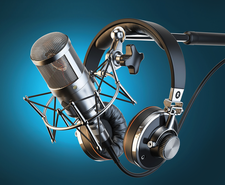Mastering and mixing with Ardour
Sound Explorer

Once you get your podcast operation up and running, you might decide you want a real mixer and some higher-end software. We'll introduce you to Ardour and get you started with some basic audio hardware.
Podcasting often occupies a space on the low end of the audio recording spectrum. All you really need is a computer, suitable software, and a microphone. Some users, however, might wish to avoid this most basic scenario. You might ask, "If I'm going to all the trouble to set up a studio for podcasting, what else can I do with it?" Or you might want your studio to grow into something more sophisticated. Perhaps you are a musician yourself? Or you wish to host live music – or other performance alternatives that require mixing and multiple mics.
In these scenarios, you could easily outgrow the simple mic+Audacity configuration. If you're looking for something more, try Ardour.
Ardour [1] is still considered the reference application as a free tool for recording and mixing on Linux. A variety of alternatives also exist – for instance, Muse is a good option if you are composing music with MIDI, and Qtractor offers some innovative features for working loops and samples – but when it comes to mixing and mastering, Ardour is unsurpassed.
[...]
Buy this article as PDF
(incl. VAT)
